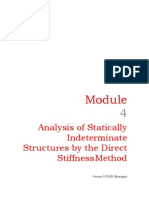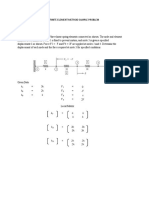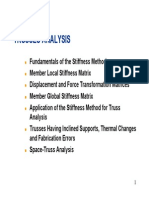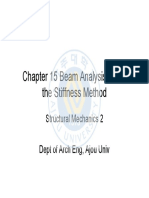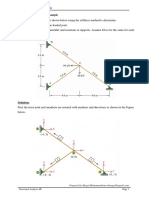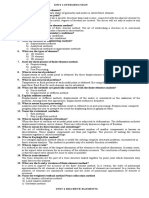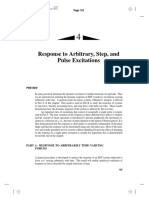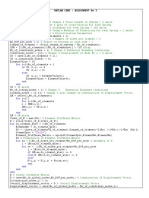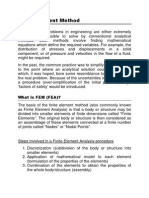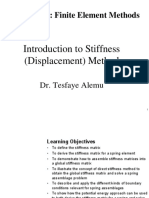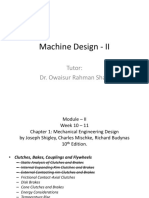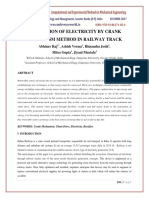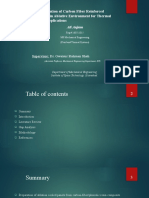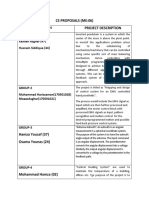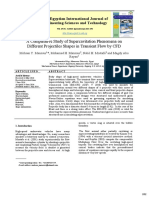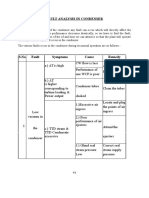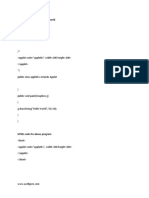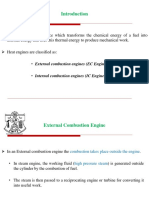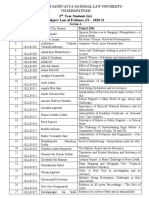100% found this document useful (1 vote)
717 views25 pagesDirect - Method Solved Examples
This document discusses the direct stiffness method for assembling finite element models. It introduces 1D spring elements and shows how to derive the element stiffness matrix for a spring. It then demonstrates how to assemble the element stiffness matrices into a global stiffness matrix for systems of multiple springs through superposition. Finally, it provides two examples showing how to apply this method to find the global stiffness matrix, displacements, and reaction forces for simple spring systems.
Uploaded by
HusnainCopyright
© © All Rights Reserved
We take content rights seriously. If you suspect this is your content, claim it here.
Available Formats
Download as PDF, TXT or read online on Scribd
100% found this document useful (1 vote)
717 views25 pagesDirect - Method Solved Examples
This document discusses the direct stiffness method for assembling finite element models. It introduces 1D spring elements and shows how to derive the element stiffness matrix for a spring. It then demonstrates how to assemble the element stiffness matrices into a global stiffness matrix for systems of multiple springs through superposition. Finally, it provides two examples showing how to apply this method to find the global stiffness matrix, displacements, and reaction forces for simple spring systems.
Uploaded by
HusnainCopyright
© © All Rights Reserved
We take content rights seriously. If you suspect this is your content, claim it here.
Available Formats
Download as PDF, TXT or read online on Scribd
/ 25
